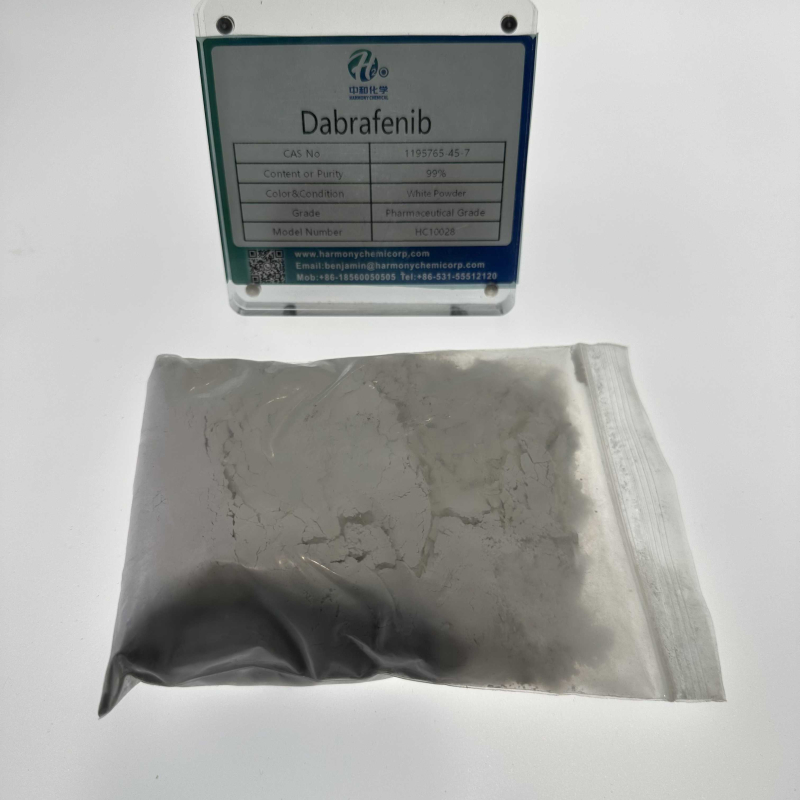English nameAmmonium Zirconium HexafluorideCAS16919-31-6Molecular formula(NH4)2.ZrF6Molecular weight241.29Density1.15g/mLat 25°C(lit.)Water-solubility287.7g/L at 20℃Storage conditionsRoom TempratureAppearanceWhite crystalsmolecular structure:
Contact Now
Zirconium acetate (liquid), a colorless obvious liquid organized by way of the response of zirconium oxychloride and sodium carbonate. Widely used in industries such as medicine, cosmetics, electronics, ceramics, paint, glass, etc.Density1.279g/mLat25 ° CFormliquidWater solubility931g/Lat20 ℃InchiKeyMFFVROSEPLMJAP-UHFFFFAOYSA-JCAS datalibrary 7585-20-8 (CASDataBaseReference)EPA Chemical InformationAceticacid, Zirconiumsalt (1:?) (7585-20-8)
Contact Now
Density: 1.10g/cm3Melting point: 107-108 ℃Steam pressure: 49.8mm Hg at 25 ° CAppearance: Orange crimson crystalline powderSolubility: without difficulty soluble in water and ethanol, nearly insoluble in targeted nitric acidAmmonium cerium nitrate (abbreviated as CAN) is a robust oxidant with enhanced oxidizing homes underneath acidic conditions, 2nd solely to F2, XeO3, Ag2+, O3, and HN3.
Contact Now
nameMETHOPRENECAS NO40596-69-8Molecular formulaC19H34O3molecular weight310.47melting point<25℃boiling pointbp0.06 135-136°density0.9261 g/cm3 (20℃)Storage conditions0-6°CsolubilityChloroform (Slightly), Methanol (Sparingly)formneat
Contact Now
This product is an amide Local anesthetic. Widely used in surface anesthesia, infiltration anesthesia, conduction anesthesia, and epidural anesthesia.nameLidocaineCAS NO137-58-6Molecular formulaC14H22N2Omolecular weight234.34melting point66-69°Cflash point9℃solubilityethanol: 4 mg/mLformpowdercolourWhite to slightly yellowSOLUBLEpractically insoluble
Contact Now
nameNitazoxanideCAS NO55981-09-4Molecular formulaC12H9N3O5Smolecular weight307.28melting point202°Cdensity1.629 g/cm3Storage conditions2-8°CsolubilitySoluble in DMSO (>50 mg/ml)formsolidcolourOff-white
Contact Now
nameTofacitinibCAS NO477600-75-2Molecular formulaC16H20N6Omolecular weight312.38density1.3Storage conditions-20°CsolubilitySoluble in DMSO (up to 100 mg/ml) or in Ethanol (up to 100 mg/ml).formPale powder.Acidity coefficient (pKa)6.04±0.60(Predicted)colourOff-white
Contact Now
Polyvinylpyrrolidone, additionally recognised as PVP, is a polymer of ethylene pyrrolidone. Due to its one-of-a-kind ranges of polymerization, it can be divided into soluble PVP and insoluble PVPP (polyvinylpyrrolidone). The relative molecular weight of soluble PVP is 8000~10000, which can be used as a precipitant to precipitate with the aid of reacting with polyphenols. By the use of this method, there are without problems residual PVP in the wine.
Contact Now
nameOzagrel sodiumCAS NO189224-26-8Molecular formulaC13H11N2NaO2molecular weight250.23Storage conditionsStore at -20°CSOLUBLEWater: ≥ 44 mg/mL (175.84 mM)It is suitable for the treatment of the dyskinesia associated with vasospasm after the operation of acute thrombotic cerebral infarction and Subarachnoid hemorrhage and the improvement of the symptoms of cerebral ischemia.
Contact Now
nameEsmolol hydrochlorideCAS NO81161-17-3Molecular formulaC16H26ClNO4molecular weight331.83melting point48-50°Cdensity1.026Storage conditions−20°CsolubilityH2O: soluble12mg/mLformbuffered aqueous solutioncolourWhite to Off-White
Contact Now
Polyisoprene rubber (IR) is a artificial rubber compound organized through answer polymerization of isoprene monomers underneath the motion of a catalyst. It has a chemical composition, three-d structure, and mechanical residences comparable to herbal rubber, as properly as true uncooked fabric strength, simple viscosity, getting older performance, and rebound performance.
Contact Now
Non toxic, protected and environmentally friendly, non-toxic and odorless, non polluting plants, soil and groundwater, fruit timber and flowers, afforestation, soilless cultivation, plant renovation and transportation, area crops, etc.The ultimate decomposition merchandise of soil water maintaining marketers and water resistant soil loss marketers are carbon dioxide, water, ammonia nitrogen, and sodium or potassium ions, besides any residue.Preserving moisture and saving water can effi
Contact Now
The conductivity of carbon black is carefully associated to its shape (especially graphite microcrystalline structure), floor properties, and particle size. The conductive mechanism of carbon black in rubber often consists of conductive channel and Field electron emission mechanism. The conductive channel mechanism is that carbon black aggregates come into contact with every different in the adhesive to structure a community like channel and behavior electricity.
Contact Now
Melting point900 ° C (lit.)Density4.0g/mL (lit.)Vapor pressure0Paat20 ℃SolubilityH2O: insoluble (Chemicalbooklit.)FormPowderColor WhiteOdorOdorlessWater solubilityInsolubleinwaterThe herbal mineral of zinc phosphate is referred to as "parathionite", which has α- Type and β- There are two types.
Contact Now
nameAlectinibCAS NO1256580-46-7Molecular formulaC30H34N4O2molecular weight482.62melting point274-276°Cboiling point722.5±60.0 °CStorage conditions-20°Acidity coefficient (pKa)13.70±0.40(Predicted)formsolidcolourcolour
Contact Now
namePrussian BlueCAS NO14038-43-8Molecular formulaC6FeN6.4/3Femolecular weight859.23density1.8Storage conditionsRoom TemperatureformPowderSOLUBLEpractically insolublesensitivenessHygroscopicstabilityStable. Incompatible with strong acids, strong oxidizing agents, ammonia. Light sensitive.
Contact Now
nameLinezolidCAS NO165800-03-3Molecular formulaC16H20FN3O4molecular weight337.35melting point176-1780CSpecific RotationD20 -9° (c = 0.919 in chloroform)boiling point585.5±50.0 °C(Predicted)Storage conditionsroom tempformpowdercolourwhite to off-white
Contact Now
Polyvinylpyrrolidone, additionally acknowledged as PVP, is a polymer of ethylene pyrrolidone. Due to its unique ranges of polymerization, it can be divided into soluble PVP and insoluble PVPP (polyvinylpyrrolidone). The relative molecular weight of soluble PVP is 8000~10000, which can be used as a precipitant to precipitate by way of reacting with polyphenols. By the usage of this method, there are effortlessly residual PVP in the wine.
Contact Now
Tetracaine hydrochloride is used for mucosal floor anesthesia, conduction anesthesia, epidural anesthesia, and subarachnoid anesthesia; Used for ophthalmic floor anesthesia, barring constricting blood vessels, detrimental corneal epithelium, and growing intraocular pressure.nameTetracaine hydrochlorideCAS NO136-47-0Molecular formulaC15H25ClN2O2melting point149°Cdensity1.1279 (rough estimateStorage conditions2-8°Csolubilityalcohol: solublesoluble 40 parts of solventformneatcolourWhite to Almost whiteSOLUBLESoluble in water at 50mg/ml
Contact Now
nameVildagliptinCAS NO274901-16-5Molecular formulaC17H25N3O2molecular weight303.4boiling point531.3±50.0 °C(Predicted)density1.27flash point275.1℃Storage conditionsKeep in dark place,Inert atmosphere,Store in freezer, under -20°CformsolidcolourWhite
Contact Now
Melting point<-40°CBoiling point265 °C10 mm HgDensity1.143 g/mL at 25 °CVapor pressure0.03 mm Hg ( 25 °C)Refractivityn20/D 1.555Flash point>230 °FStorage conditionsStore below +30°CSolubilityorganic solvents: miscible Emergency ManagementLeakage emergency responseQuickly evacuate personnel from the contaminated location to a protected area, isolate them, and strictly prevent entry and exit. Cut off the ignition source.
Contact Now
nameDabrafenibCAS NO1195765-45-7Molecular formulaC23H20F3N5O2S2molecular weight519.56melting point214-216oCboiling point653.7±65.0 °C(Predicted)density1.443Storage conditions-20°CformWhite solid.colourOff-white
Contact Now
nameAdemetionine disulfate tosylateCAS NO97540-22-2Molecular formulaC22H34N6O16S4molecular weight766.78melting point>122°C (dec.)Storage conditionsInert atmosphere,Store in freezer, under -20°CsolubilityDMSO (Slightly, Heated), Water (Sparingly)formSolidcolourWhite to Pale Yellow
Contact Now
Main purposeEthylene glycol dimethyl acrylate is frequently used in the plastic and rubber industries as a crosslinking agent for ethylene acrylic copolymers, ABS, acrylic sheets, pipes, glass fiber bolstered polyester, PVC, ion trade resins, smokeless powder encapsulation polymerization, glazing, etc. is additionally used as a polymer in copolymerization, which will increase hardness, warmness resistance, climate resistance, solvent resistance, and friction resistance.
Contact Now





























